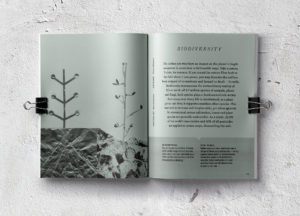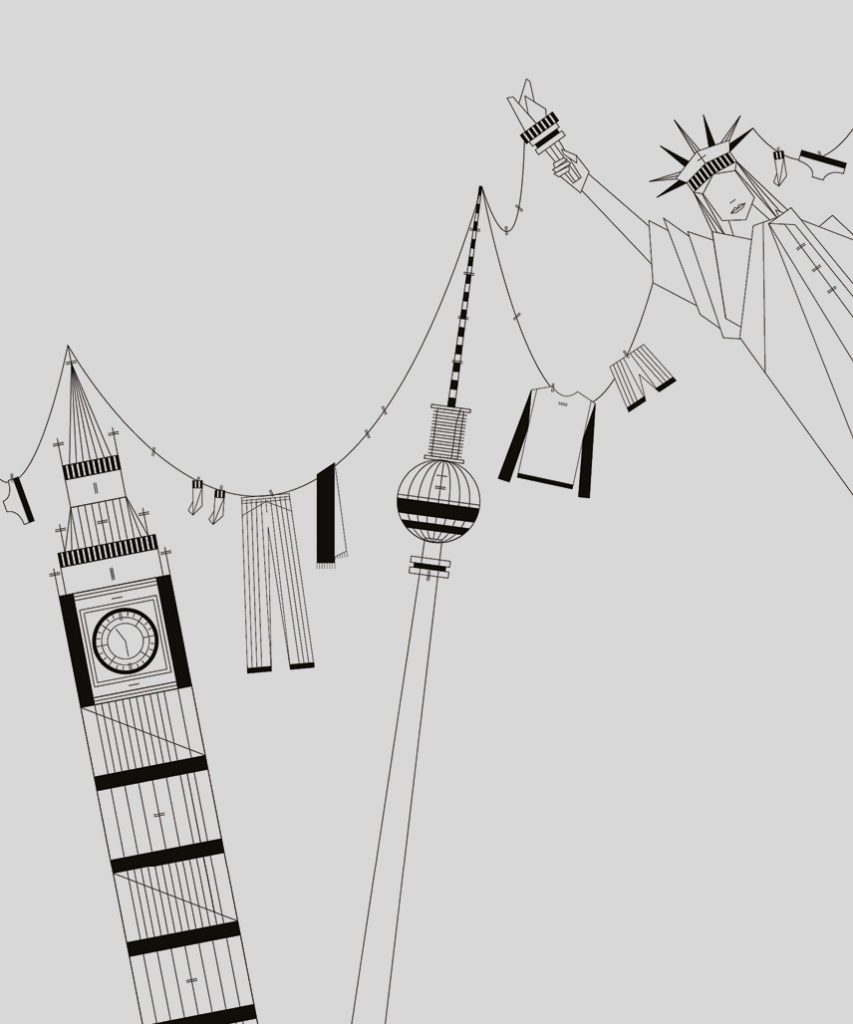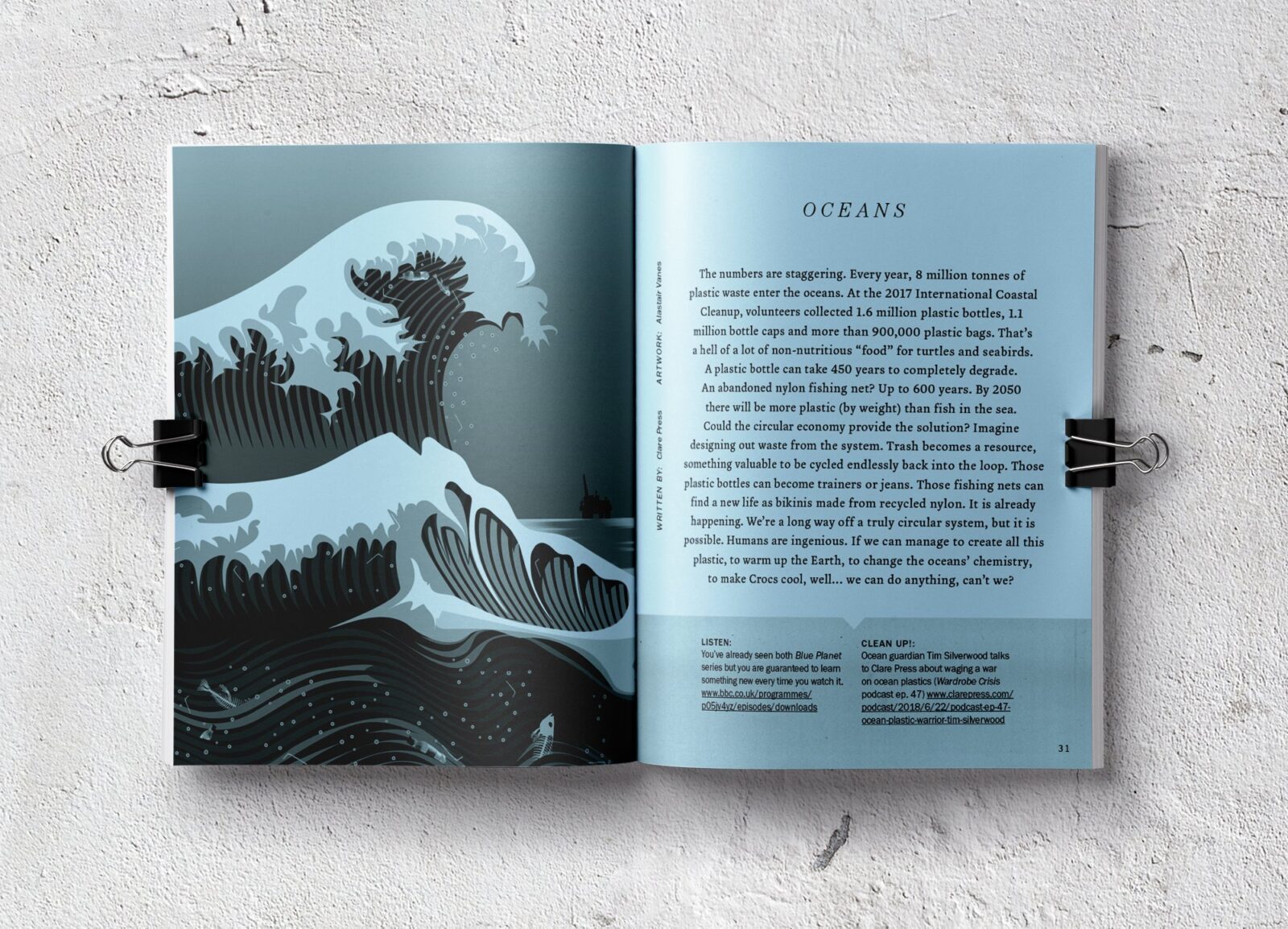In early August I told you about the imminent release of # 3 Fashion Revolution’s fanzine entitled ‘Fashion, Environment, Change’; well, the magazine came out and I just got it. It is always a pleasure to receive it and this time I found a hyper-reduced format (15 x 18 cm) but still nice because it gives the idea of a brochure, a sort of lightweight and portable vademecum but with lots of useful information inside.
The introduction by Orsola De Castro, co-founder of the fanzine and of Fashion Revolution, says among other things that the first weapon to bring about an improvement in the fashion industry is knowledge. Knowledge in this case comes from the opinion of several experts who have contributed to the fanzine and in the following pages follow precisely these small contributions accompanied by the illustrations of graphic design students of Central Saint Martins. Here are some (and then you can always order the fanzine😉).

About biodiversity. Sienna Somers, former author of the blog ‘The Savvy Student’, studies in zoology, writes about how it is important to preserve the 8.7 million terrestrial animal and plant species for their irreplaceable role in the ecosystem and that even the clothes we wear have an impact on them. And a cotton t-shirt, for example, and the way that cotton was grown, with insecticides and pesticides, is already an attack on the field and its elements. If you want to do something you can buy GOTS certified organic cotton and / or recycled cotton, if possible. The beautiful illustration is by Florrie Macleod.
About emissions. “One pair of 501 jeans produces 33.4 kg of carbon dioxide” writes Sarah Ditty, head of policy of Fashion Revolution “no wonder we are seeing a progressive buildup of carbon dioxide in the atmosphere”. And she goes on saying that many scientists believe that we will reach the non-return level or the greatest disaster that human civilisation has ever faced by 2050, if we all don’t get a grip on ourselves. How? For example, estimations say we wear our jeans on average 2.3 times between each wash…if we washed every 10 wears instead, we could reduce energy usage by 77%! Illustration by Lillie Meyer.


About oceans. Clare Press, Sustainability Editor-at-Large at Vogue Australia and presenter of the ‘Wardrobe Crisis podcast‘, talks about the 8 million tonnes of plastic waste enter the oceans every year. A plastic bottle can take 450 years to completely degrade. And let’s not talk about an abandoned nylon fishing net: up to 600 years! A solution? Recycle that plastic, by turning it into sneakers or jeans and those fishing nets can become swimsuits (I talked about it in this post). It is already happening because humans are ingenious and they can do wonders (but unfortunately disasters too). Illustration by Alastair Vanes.


About recycle. Matthew Needham, the designer who turns waste into clothes, says that in a circular economy, the recycling process is possible at every stage, from design to production. “As Fashion Revolutionaries, we have the opportunity to showcase this in new ways and inspire others to do the same. As young creatives, we especially have the freedom to be innovative with recycling and explore both its limitations and opportunities. It is the new zeitgeist” . Illustration by Jessica Duggan.


About viscose. When it was invented in the late 1800s, viscose was exalted as a cheaper alternative to silk. But its production, today, requires intensive process that goes from deforestation to toxic chemicals use. A lot of companies have been working to reduce the impact of its production working with Canopy, a NGO working with brands to verify that its supply chain is free from wood originating from ancient and endangered forests and that all the chemicals used are recovered and pulp bleaching processes are 100% chlorine free. Scarlett Conlon, fashion editor at The Guardian, says all this and other. Wonderful illustration by Helena Traill. (We talked about viscose too!)


As I said, I have mentioned only a few, but the fanzine cites other important topics accompanied by equally delightful illustrations. There is also a poem by Wilson Oryema, a multidisciplinary writer and artist. Take a look


![Mono[PA6] by Freitag, a prova di economia circolare](https://eco-a-porter.com/wp-content/uploads/2024/05/freitag_monopa6_hero_master_16zu9_fin_01.2_0-218x150.jpg)













